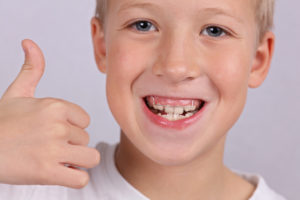
Why Would My Orthodontist Give Me a Retainer Without Braces?
There are many different aspects to orthodontic treatment, and each patient requires a different treatment plan. But what does it mean if your orthodontist suggests you get a retainer without having braces?
Why Would my Orthodontist Give me a Retainer without Braces?
A retainer serves a very different purpose than braces do. As the name implies, a retainer is meant to retain your teeth in a specific position, so movement and shifting cannot affect your alignment. Retainers cannot serve the same function as braces or Invisalign in any capacity, but there are a few circumstances where your orthodontist might have you wear a retainer instead of or prior to getting a full set of braces.
Fixing Minor Issues
If there is a small, easily adjustable issue with one to two teeth in your mouth, that issue could potentially be fixed with retainers instead of a full set of braces. To elaborate, small gaps, single tooth adjustments, and other very minor issues can be fixed via retainers. Any other adjustments that need to be done to your teeth would be better suited to braces. If your mouth requires more orthodontic refinement, your orthodontist will likely not even give you the option of getting a retainer to fix the issues. Overbites, underbites, crossbites, multiple gaps, or crooked teeth are all issues best suited for standard braces.
If you don’t want to deal with braces, you have the option of getting Invisalign as long as your orthodontist says you’re a good candidate. This option gives you the benefit of braces without the noticeability and food restrictions. Invisalign has many benefits, but it is not the same as braces. You should always choose the option that is the best fit for you.
Tongue Thrust and Thumbsucking
Another reason your orthodontist might give you a retainer without braces is to assist in correcting tongue thrusting issues. A tongue thrust is when your tongue goes between your front teeth or moves to the side when you talk or swallow. This can cause misalignment in those teeth from repeated force being put on them, but it can be fixed using retainers. The retainers might have something blocking your tongue from going forward or to the side (usually metal bars of some sort) and will instead force your tongue to stay in the center of the roof of your mouth.
While many young children go through a phase of thumbsucking, this habit can be detrimental to their oral health for years to come if it continues too long. While parents may try alternative options to halt a thumbsucking habit, there is only one tried-and-true option. A custom made retainer or appliance can discourage thumb-sucking with a set of metal prongs until it is no longer a habit.
When Should a Thumb Sucking Appliance Be Used?
It’s not uncommon for younger patients to be given a retainer before they get braces to eliminate thumb-sucking. A thumb sucking appliance will remain in place until the sucking habit has been broken. There are two categories of thumb sucking appliances—a fixed appliance and a removable one.
A removable appliance is non-permanent and typically worn while the child is sleeping to help curb their habit. This type of appliance is best for children who are just old enough to want to break their thumb-sucking habit but may need the extra help. A benefit of a removable appliance is it makes cleaning of the teeth and gums easier. A fixed appliance is placed by an orthodontist into the child’s mouth and is best for those little ones who are unwilling to break their habit.
Just as good habits take a long time to build, it can take just as long to break a bad one. Thumb-sucking appliances can take from six months to a year for a really persistent habit.
Teeth Grinding and Maintaining Tooth Positions between Phases
Retainers are also able to stop a patient’s habit of grinding their teeth. If retainers are worn at night, the jaw cannot close completely, inhibiting their ability to grind their teeth while they sleep.
Another reason your orthodontist may have you wearing a retainer without braces is to help keep teeth in line while transitioning between phases of orthodontic treatment. Also known as two-phase treatment, Phase 1 and Phase 2 treatment involves a child receiving orthodontic treatment at two separate times. Typically a break occurs between these phases.
In most cases, the first phase of treatment starts when the young patient is between the ages of 7 and 10 and still has a mix of primary and permanent teeth. This is followed by a period of rest before the second phase begins, which will generally be once most of the adult teeth have emerged. During the in-between period, it is common to have young patients wear retainers. This is so the Phase 1 progress is not lost.
Overall, using retainers in lieu of braces is not recommended by orthodontists. Retainers are not as strong as braces or Invisalign and cannot fix most orthodontic issues seen in patients. If you’re unsure which option would be best for you, talk to your orthodontist. More often than not, braces or Invisalign are going to be the best route. There is a lot more control over what can be fixed, and they are the best and most effective ways of treating misalignment in teeth.
At Milnor Orthodontics, our experts are here to help you achieve a priceless smile. Call our office at (970) 230-3187 or visit milnororthodontics.com to learn more. We're located at 1103 S. Shields St. in Fort Collins, Colorado.








